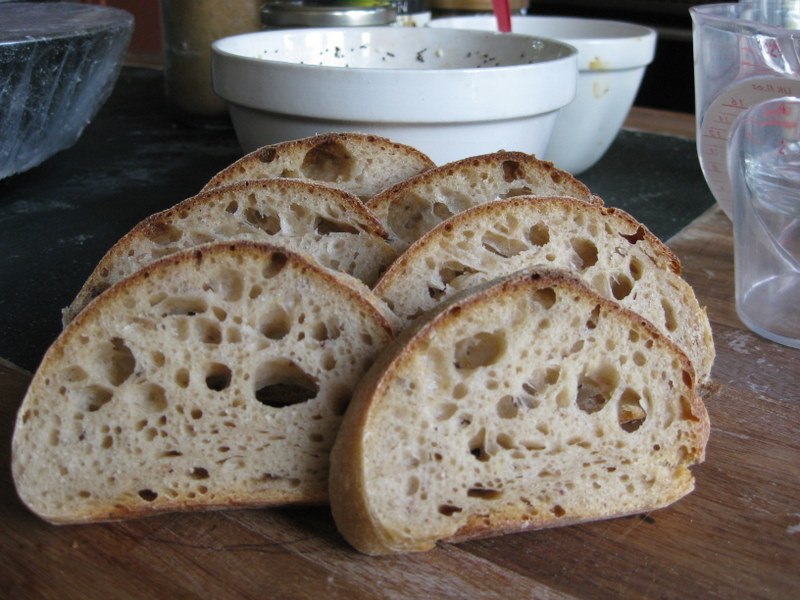How do I get holes in my bread?
Holes seem to be the holy grail of bread making for many and yet those pesky holes can be elusive. We have determined that there are five conditions necessary to get holes in your bread, if you want them.
1. You need a wet dough. Wet dough is lighter than dry dough and it stretches more easily and so can fill with big, blousy air bubbles much more easily than dry dough.
2. You need to do the stretch and fold throughout the bulk fermentation of the dough (that’s the part when it rises before you shape it). You do this for various reasons, all of which lead to your dough continuing to ferment (rise) as best it can. These reasons include: to degas the dough in a gentle way without eliminating the bubbles that have already formed, to thin the dough membranes so that they stretch into bubbles more easily, to strengthen the dough so the bubbles don’t pop, to provide the yeast with new food so it can continue to emit the gas to make the bubbles. How often you stretch and fold depends on the recipe.
3. You need to shape your dough gently so that you don’t squish out all the wonderful air bubbles that have been forming. Scrape the dough out of the bowl gently and lovingly onto the counter. Stretch and fold it one last time for the reasons listed above. Be gentle when you are working the dough into its final shape for its final rise. You absolutely need to de-gas the dough between the bulk fermentation and the shaping – just do it gently. Don’t squash it completely flat and expect huge holes in it too.
4. You do need to use a flour that has a lot of stretchy gluten. This limits you to white wheat or spelt flour, and that’s about it. White emmer, einkorn or kamut may work as well too, depending on where they are grown and how much stretchy gluten they have. However, too much whole meal, rye, or other kinds of flour whether or not they have gluten and you simply do not have the raw material you need to get bread with holes.
5. Too much “filling” whether it’s nuts, fruit or seeds will weight down the dough making it harder to get holes. An open crumb, yes. Big uneven holes, not really.
Holes, therefore, are not a function of equipment nor of the level of gluten in your flour. However, they are a function of ingredients, hydration, practice and patience.
Still not sure? Come and take a bread course. We have courses on how to bake both sourdough and non sourdough bread and during any of the classes you will learn how to work with wetter doughs, how to do the stretch and fold and how to achieve a final shape without necessarily “punching back” your dough. We don’t guarantee holes on your first try but we do guarantee that you will learn what you need to so that, with practice, you will get the holes!
